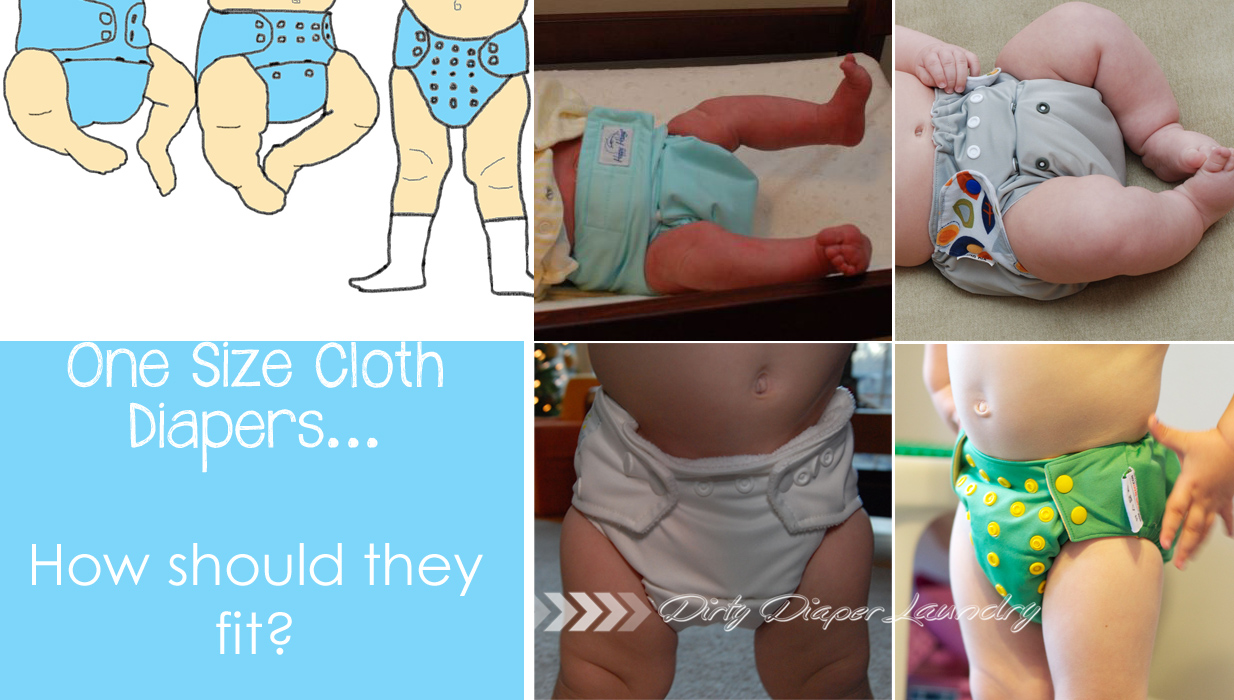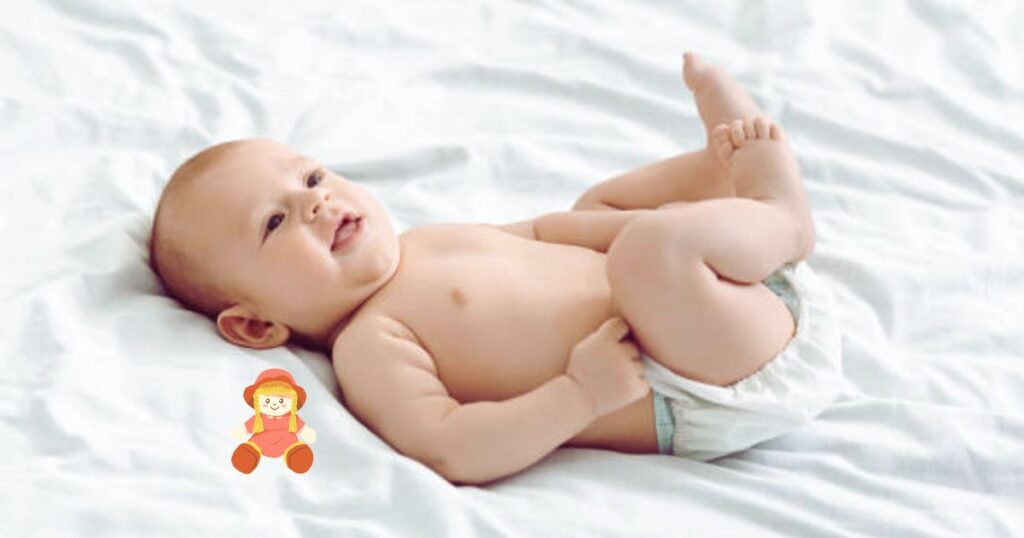How should baby diaper fit? In this guide, we provide essential tips on finding the perfect fit for your baby, preventing leaks, and ensuring comfort. Learn how to choose the right diaper size today.
Choosing the right diaper fit for your baby is crucial for comfort and preventing leaks. Diapers that are too tight can cause discomfort and red marks, while loose-fitting diapers may lead to messy accidents. Pay attention to the size guidelines provided by diaper brands, as they consider the baby’s weight and waist measurements.
Ensure the diaper’s waistband is just below the belly button and the leg cuffs are untucked to avoid leaks. A well-fitting diaper helps keep your baby dry, happy, and rash-free. Regularly check the fit as your baby grows and adjust the size accordingly to maintain comfort and effectiveness.

Credit: www.mustelausa.com
How Should Baby Diaper Fit? Choose the Right Size
Finding the perfect fit for your baby’s diaper is crucial. It ensures comfort and prevents leaks. But how do you choose the right size? There are two common methods: weight-based sizing and age-based sizing. Let’s explore both to help you make an informed decision.
Weight-based Sizing
Weight-based sizing is a reliable way to find the right diaper size. Most diaper brands offer size charts based on a baby’s weight. Below is a general guide:
| Weight | Diaper Size |
|---|---|
| Up to 10 lbs | Newborn |
| 8-14 lbs | Size 1 |
| 12-18 lbs | Size 2 |
| 16-28 lbs | Size 3 |
| 22-37 lbs | Size 4 |
Always check the packaging for specific weight ranges. Ensure the diaper fits snugly without being too tight. This method is precise and helps reduce leaks and discomfort.
Age-based Sizing
Age-based sizing can also guide you in selecting the right diaper size. While weight is more accurate, age can be helpful too. Here’s a simple guide:
- Newborns (0-2 months): Newborn Size
- Infants (2-4 months): Size 1
- Babies (4-7 months): Size 2
- Babies (7-12 months): Size 3
- Toddlers (12+ months): Size 4
Remember, every baby grows differently. Some may need to move up a size sooner. Always check for red marks or gaps around the legs and waist. This indicates if the diaper is too small or too large.
Choosing the right size ensures a happy and comfortable baby. It also helps keep your baby dry and rash-free.

Proper Waistband Placement
Ensuring that a baby’s diaper fits correctly is crucial for comfort and hygiene. One of the key aspects of a good fit is the proper waistband placement. The waistband should sit comfortably on the baby’s waist, neither too tight nor too loose. Let’s dive into the details of how to achieve this.
Avoiding Tightness
A too-tight waistband can cause discomfort and leave marks on the baby’s skin. This can lead to irritation and even rashes. To prevent this, follow these tips:
- Ensure there is enough room to fit two fingers between the waistband and the baby’s skin.
- Avoid fastening the diaper too tightly. It should be snug but not constrictive.
- Check for red marks around the waist after removing the diaper.
These simple checks can help avoid tightness and keep your baby comfortable.
Ensuring Snug Fit
A snug fit is essential for preventing leaks and ensuring that the diaper stays in place. Here are some guidelines to follow:
- The waistband should sit just below the baby’s belly button.
- Make sure the diaper is even and symmetrical on both sides.
- Check that the leg cuffs wrap around the thighs without any gaps.
A well-fitted diaper not only prevents leaks but also keeps the baby happy and active. By focusing on proper waistband placement, you can ensure a comfortable and secure fit for your baby every time.
Leg Cuff Adjustments
Proper leg cuff adjustments are essential for a good diaper fit. This ensures your baby stays comfortable and dry. Let’s explore some key points for adjusting the leg cuffs.
Preventing Leaks
Preventing leaks is crucial for keeping your baby dry. Follow these steps:
- Make sure the leg cuffs sit snugly around your baby’s thighs.
- Avoid tucking the cuffs inward; they should always stay out.
- Check for any gaps between the diaper and the skin.
Pro tip: After putting on the diaper, run your fingers around the leg cuffs. This ensures they are correctly positioned and not tucked in.
Ensuring Comfort
Ensuring comfort is as important as preventing leaks. A well-fitted diaper keeps your baby happy. Here’s what to do:
- Avoid overtightening the leg cuffs. This can cause red marks and discomfort.
- Check the diaper fit when your baby moves. The cuffs should adjust with movement.
- Choose a diaper size that suits your baby’s weight. This helps in achieving a better fit.
Remember: A comfortable baby is a happy baby. Always check the fit for both comfort and leak prevention.
Checking For Red Marks
Ensuring the proper fit of a baby diaper is crucial. One important aspect is checking for red marks. Red marks can be a sign that the diaper is too tight or not fitted correctly. This can cause discomfort for your baby. Let’s delve into how to identify and address this issue.
Common Problem Areas
Red marks typically appear in certain areas. These are:
- Waistband: The diaper’s waistband can dig into the baby’s skin.
- Leg Cuffs: The elastic around the legs can leave marks.
- Back: The back of the diaper may cause indentations.
Adjusting Fit
Adjusting the diaper can help eliminate red marks. Follow these steps:
- Ensure the diaper is the correct size for your baby.
- Align the diaper properly before fastening.
- Fasten the tapes snugly but not too tight.
For more precise adjustments, use this table to guide you:
| Adjustment Area | Action |
|---|---|
| Waistband | Loosen the tapes slightly. |
| Leg Cuffs | Ensure the elastic is not twisted. |
| Back | Smooth out any wrinkles. |
Remember, a well-fitted diaper should feel comfortable for your baby. It should not leave any red marks or indentations.
Ensuring Absorbency
Ensuring absorbency is crucial for your baby’s comfort and health. A well-fitting diaper keeps your baby dry and prevents leaks. It also protects their delicate skin from rashes.
Daytime Vs. Nighttime
Daytime and nighttime diapers serve different purposes. Daytime diapers need to be less bulky. They should allow your baby to move freely. Look for diapers with moderate absorbency for daytime use.
Nighttime diapers require more absorbency. Babies sleep longer at night. You want a diaper that can hold more liquid. Choose a diaper designed for overnight use. These diapers are often thicker and more absorbent.
Heavy Wetters
Some babies are heavy wetters. They need extra absorbency. Look for diapers marked as suitable for heavy wetters. These diapers have extra layers. They can absorb more liquid. Change heavy wetters more often to keep them dry.
Using a booster pad can also help. Booster pads add an extra layer of absorbency. Place them inside the diaper. They are especially useful at night.
- Daytime diapers: Moderate absorbency, less bulk.
- Nighttime diapers: High absorbency, more bulk.
- Heavy wetters: Extra absorbent, frequent changes.
Ensuring the right fit and absorbency keeps your baby comfortable. It also keeps their skin healthy.
Dealing With Blowouts
Blowouts can be a nightmare for any parent. They create mess and stress. Understanding how to fit a diaper properly can prevent these incidents. Let’s explore some strategies and tips to keep your baby clean and happy.
Proper Fit Strategies
A proper diaper fit is essential to avoid blowouts. Ensure the diaper is snug but not too tight. A snug fit around the waist and thighs is crucial. Here are some key points:
- Check the Waistband: The waistband should sit just below the belly button. It should not be too tight.
- Leg Cuffs: Ensure the leg cuffs wrap neatly around your baby’s thighs. No gaps should be visible.
- Back Coverage: The back of the diaper should cover the baby’s bottom entirely.
If you notice red marks, the diaper might be too tight. Adjust accordingly. A well-fitted diaper prevents leaks and blowouts.
Choosing High-quality Diapers
High-quality diapers play a significant role in preventing blowouts. Not all diapers are created equal. Here’s a simple comparison to help you choose the best:
| Feature | High-Quality Diapers | Low-Quality Diapers |
|---|---|---|
| Absorbency | High absorbency, keeps skin dry | Low absorbency, frequent leaks |
| Comfort | Soft, gentle on skin | Rough, may cause rashes |
| Fit | Snug fit, adjustable tabs | Loose fit, poor adjustment |
Choose diapers with high absorbency and comfortable material. Look for brands known for quality and reliability.
By following these strategies and choosing high-quality diapers, you can minimize blowouts. Your baby will stay comfortable and happy.
Signs Of Ill-fitting Diapers
Understanding the signs of ill-fitting diapers is crucial. Properly fitting diapers prevent discomfort and leaks. Here are key indicators that a diaper may not fit well.
Frequent Leaks
Frequent leaks are a clear sign. If you notice constant wetness, the diaper might be too small or too large. A well-fitting diaper should contain all messes.
Check for gaps around the legs and waist. Gaps allow liquid to escape. Adjust the diaper or try a different size.
| Size | Weight Range |
|---|---|
| Newborn | Up to 10 lbs |
| Size 1 | 8-14 lbs |
| Size 2 | 12-18 lbs |
| Size 3 | 16-28 lbs |
Baby’s Discomfort
Baby’s discomfort is another sign. If your baby fusses or cries, it might be the diaper. Red marks on the skin indicate tightness. Loose diapers can also cause rashes.
- Check for red marks around the waist and legs.
- Ensure the diaper fits snugly but not too tight.
Observe your baby’s behavior. Frequent crying or squirming can mean discomfort. A proper fit is crucial for your baby’s happiness.
Tips For Active Babies
Active babies need diapers that keep up with their movements. Ensuring a proper fit prevents leaks and discomfort. Here are some tips to choose the right diaper for your active little one.
Flexible Fit
Babies love to move around. A diaper with a flexible fit allows them to do so without restrictions. Look for diapers with stretchy sides. These provide a snug fit and adapt to your baby’s movements.
A flexible waistband also ensures comfort during playtime. It prevents the diaper from slipping down. Check that the leg cuffs are elastic. This helps to contain any leaks and keeps your baby dry.
Durable Materials
Durability is key for active babies. Choose diapers made from durable materials. This ensures they last through all the running, crawling, and rolling.
Opt for diapers with multiple layers. These layers offer better absorption and prevent sagging. A good outer cover is essential. It should be breathable yet sturdy.
| Feature | Benefit |
|---|---|
| Stretchy Sides | Allows free movement |
| Elastic Leg Cuffs | Prevents leaks |
| Multiple Layers | Better absorption |
| Breathable Outer Cover | Prevents rashes |
Ensure the diaper material is soft. This prevents irritation and keeps the baby comfortable. Hypoallergenic materials are a plus. They reduce the risk of allergies and rashes.
- Look for hypoallergenic options.
- Check for a soft inner lining.
- Ensure breathability in the outer cover.
Choosing the right diaper keeps your active baby happy and dry. A good fit and durable materials make all the difference.

Credit: dirtydiaperlaundry.com
Frequently Asked Questions
How Tight Should A Baby Diaper Be?
A baby diaper should be snug but not too tight. It should allow one finger to fit between the diaper and baby’s skin.
How To Know If Diaper Is Too Small?
If the diaper leaves red marks or gaps around the legs and waist, it’s too small.
How To Ensure A Proper Diaper Fit?
Check the diaper’s waistband and leg cuffs for gaps. Make sure they are snug but comfortable.
What Are Signs Of An Ill-fitting Diaper?
Red marks, leaks, and frequent blowouts are signs of an ill-fitting diaper. Consider changing the size.
Conclusion
Ensuring a proper diaper fit is crucial for your baby’s comfort and health. Check the waist, legs, and overall snugness. Avoid leaks and rashes with the right fit. Happy baby, happy parents! Always monitor and adjust as your baby grows.
The perfect fit makes all the difference.




